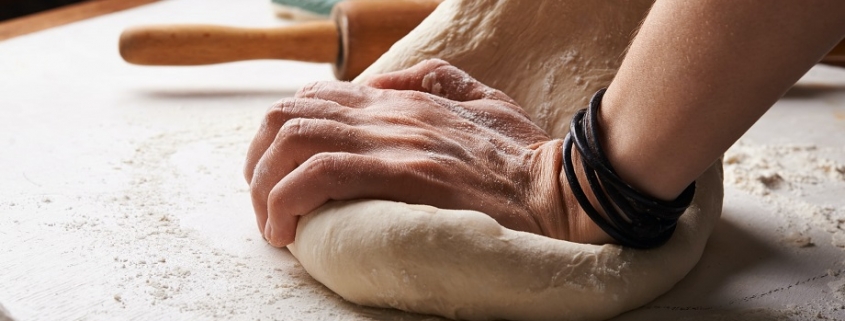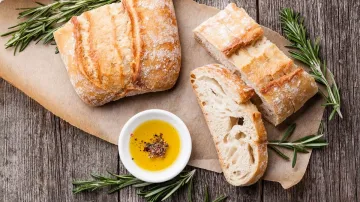The enticing aroma of freshly baked bread evokes a sense of comfort like no other. For many, baking bread is more than just a kitchen task; it’s a cherished tradition that instills a profound sense of accomplishment. Whether you’re embarking on your baking journey or are a seasoned pro, grasping the intricate details of bread-making can enhance your results significantly. This comprehensive guide outlines five essential tips for crafting flawless loaves, drawing inspiration from insightful advice shared in the article on Me Encantas. These recommendations will help make your path to mastering bread-making both enjoyable and fruitful.
The Crucial Role of Kneading in Achieving Optimal Bread Texture
Understanding How Proper Kneading Prevents Dense Bread
Kneading is one of the most pivotal processes in bread-making, as it directly influences both the texture and the rise of your loaf. Effective kneading fosters gluten development, the protein responsible for forming a network within the dough that traps air and creates a light, airy structure. As highlighted by Me Encantas, insufficient kneading will hinder the dough’s flexibility, leading to a dense, compact loaf.
Through kneading, the dough becomes more elastic and manageable, thereby improving gluten formation. When kneading by hand, aim to stretch and fold the dough for approximately ten minutes. If you opt for a stand mixer, the dough hook attachment can streamline this process. However, exercise caution to avoid over-kneading, which can result in dry and tough dough. Look for a smooth, elastic texture and ensure that the dough can stretch without tearing to determine when it’s ready.
Essential Insights for Perfecting Bread Baking
Key Tips Derived from the Me Encantas Article
Baking bread at home can be a profoundly satisfying endeavor, and the guide from Me Encantas presents five fundamental tips for achieving the ideal loaf. Regardless of your experience level, these insights can significantly enhance your baking results. Paying close attention to every aspect—from selecting high-quality ingredients to honing your kneading skills—can profoundly impact your bread-making success.
The article emphasizes that the enchantment of bread arises from using superior ingredients and applying the correct techniques. Fresh, high-quality flour and yeast are paramount, along with allowing the dough ample time to proof for optimal rising. By adhering to these principles, you’ll not only relish the baking process but also produce delightful, homemade bread.
Choosing High-Quality Ingredients for Exceptional Bread
The Impact of Ingredient Quality on Outstanding Baking
The secret to delicious bread begins with the quality of its ingredients. The flour you select heavily influences the texture and flavor of your bread. Unbleached organic flour is often recommended due to its rich flavor and its capacity to form gluten, giving bread its characteristic chewiness. The importance of this choice is emphasized in the Me Encantas article as a crucial factor for achieving top-notch results.
Yeast also plays a vital role in bread-making. Utilizing fresh, active yeast ensures that your bread rises properly, resulting in a light, fluffy loaf. Always check the expiration date on your yeast before baking, as expired yeast can result in a dense or flat loaf. Furthermore, don’t underestimate the quality of the water used in your dough; opting for filtered or bottled water can prevent any chemicals from interfering with the dough’s rise, ensuring a successful bake.

Perfecting the Proofing Process for Ideal Rise
The Importance of Adequate Proofing Time
Proofing, which involves allowing the dough to rest and rise, is a crucial stage in bread-making that can greatly affect the quality of your final loaf. Providing the dough with enough time to rise is essential for developing its texture, flavor, and overall structure. As noted in the Me Encantas guide, patience during the proofing stage is vital. Rushing this process can result in a loaf that lacks the desirable airy texture and flavor complexity.
For optimal results, proof your dough in a warm, draft-free space, ideally between 75°F and 80°F. Cover the dough with a damp cloth to prevent it from drying out. Depending on your recipe, the dough may require multiple proofing rounds to achieve the desired rise and texture.
Best Practices for Storing and Preserving Fresh Bread
How to Maintain Freshness Post-Baking
After you’ve baked the perfect loaf, it’s important to store it properly to retain its freshness and flavor. Improper storage can cause bread to lose its texture and become stale. For short-term storage, keep your bread in a paper or cloth bag, allowing for airflow to maintain the crust’s crispness. For longer storage, freezing the bread is a great option; slice it beforehand so you can easily retrieve only what you need, keeping the rest fresh.
Avoid storing bread in plastic bags or airtight containers, as this can trap moisture and make the crust soggy. By following these storage practices, you can enjoy fresh, delicious bread for several days after baking.
Selecting the Right Flour for Ideal Bread
The Significance of Flour Type in Bread Making
Flour serves as the foundation of any bread, and the type you choose has a significant effect on the texture and rise of your loaf. For instance, bread flour has a higher protein content, essential for developing the gluten structure required for a chewy texture and robust rise. On the other hand, all-purpose flour can produce softer loaves but may lack the structural strength needed for more complex types of bread. Whole wheat flour, known for its nutty flavor and denser crumb, is excellent for heartier, rustic loaves. Experimenting with various flours will help you discover the best match for the kind of bread you want to create.
The Crucial Role of Fresh Ingredients in Bread Making
Why Freshness is Essential for Great Bread
The freshness of your ingredients significantly impacts the quality of your bread. Using fresh yeast enhances the rise and adds depth to the flavor, while fresh flour is richer in nutrients and natural flavors. The Me Encantas article stresses the importance of checking expiration dates and storing ingredients properly. Flour should be kept in a cool, dry place, and yeast should be refrigerated to preserve its potency. Following these steps leads to more flavorful and successful bakes.
Mastering the Art of Dough Making
The Blend of Art and Science in Creating Dough
Once you’ve assembled your fresh ingredients, the enchanting process of bread-making truly begins: transforming these basic components into dough. This intricate process—mixing, kneading, and fermenting—turns simple ingredients into something remarkable. Understanding the balance between art and science in dough-making is essential for achieving outstanding results. Careful attention to each step ensures that your dough will have the right texture and structure for baking.
Achieving the Perfect Knead for Ideal Bread Texture
How to Knead Dough for Best Results
Kneading is an integral step in creating the gluten network that gives bread its signature texture and rise. However, achieving the right balance is crucial—over-kneading can toughen the loaf, while under-kneading can lead to a dense, heavy result. According to Me Encantas, knead until the dough reaches a smooth, elastic state. Typically, this requires about 10 minutes of hand kneading or 5 minutes using a stand mixer. You can also employ the “windowpane test” to assess readiness: stretch a small piece of dough into a thin, translucent sheet without tearing.
Exploring Flavor and Style Variations in Homemade Bread
Adding Unique Flavors and Ingredients to Your Bread
Baking bread provides endless opportunities for creativity, with numerous flavors and styles to explore. The Me Encantas article encourages bakers to experiment by adding dried fruits, seeds, herbs, or spices to their dough, customizing each loaf to suit their preferences and dietary needs.
For instance, incorporating herbs like basil, rosemary, or thyme can infuse savory loaves with delightful flavors that pair perfectly with salads or soups. For those who enjoy sweeter breads, consider mixing in dried fruits like raisins or cranberries for a delicious breakfast option. Additionally, experimenting with various bread types—such as rye, whole wheat, or sourdough—introduces distinct flavors and textures, allowing each loaf to become a unique creation.
Troubleshooting Common Bread-Making Issues
Addressing Common Baking Challenges
Even seasoned bakers can encounter challenges when making bread. Issues ranging from dough that won’t rise to loaves that turn out dense can be frustrating. Understanding how to troubleshoot these common problems will enhance your baking skills.
Managing Sticky or Dry Dough
Sticky or dry dough is a frequent challenge in bread-making, but it can be easily rectified with the right adjustments. If your dough feels too sticky, it might be due to high hydration levels or overproofing. Adding a small amount of flour during kneading can help manage stickiness. Conversely, if your dough is too dry, it may not rise correctly or achieve the desired texture. To correct this, gradually add small amounts of water until the dough reaches the right consistency. The insights from Me Encantas emphasize that achieving the right hydration balance is crucial for crafting perfect dough.
Correcting a Dense Loaf
A dense loaf can result from various factors, including insufficient kneading, inadequate rise time, or inactive yeast. To prevent this, always verify that your yeast is fresh and provide your dough with ample rise time. Thorough kneading is essential for developing the gluten structure that traps air, contributing to a light texture. The Me Encantas guide recommends allowing your dough to rise until it has doubled in size before shaping and baking for optimal results.

Understanding the Importance of Temperature Control in Bread Making
Mastering Temperature for Enhanced Dough and Bread Quality
Temperature is a key factor throughout the bread-making process, from activating yeast to controlling the dough’s rise. Too hot or too cold environments can significantly affect fermentation. The ideal temperature for yeast activation is around 100°F, ensuring that your dough rises properly. If the dough rises too quickly due to excessive heat, it may collapse during baking. Conversely, cooler temperatures may result in slow fermentation and inadequate rise.
Conclusion: Elevating Your Bread Baking Game
Baking bread is an art that melds passion with technique. By applying the tips outlined in this article, you can enhance your bread-making skills, producing loaves that are not only delicious but also visually stunning. From selecting high-quality ingredients to mastering kneading and proofing techniques, every step contributes to the final outcome. Enjoy the process, embrace experimentation, and savor the satisfaction of creating your very own perfect loaf of bread.

